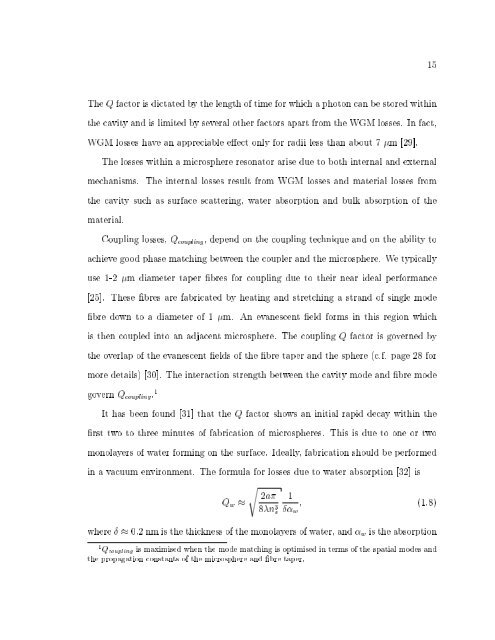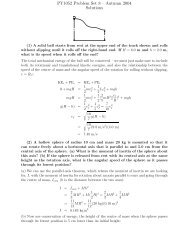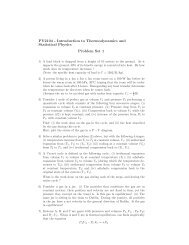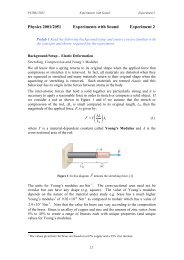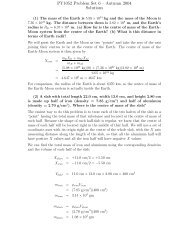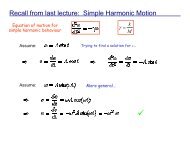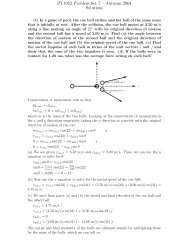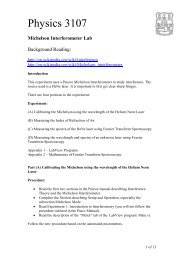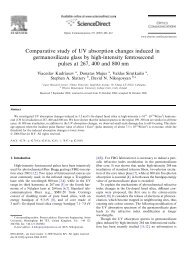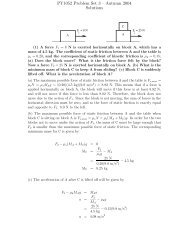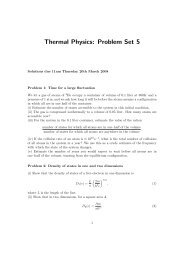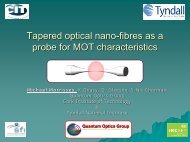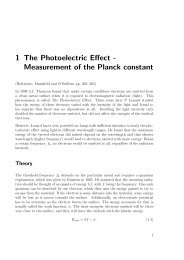optical characterisation of rare-earth doped fluoride and phosphate ...
optical characterisation of rare-earth doped fluoride and phosphate ...
optical characterisation of rare-earth doped fluoride and phosphate ...
- No tags were found...
You also want an ePaper? Increase the reach of your titles
YUMPU automatically turns print PDFs into web optimized ePapers that Google loves.
15The Q factor is dictated by the length <strong>of</strong> time for which a photon can be stored withinthe cavity <strong>and</strong> is limited by several other factors apart from the WGM losses. In fact,WGM losses have an appreciable eect only for radii less than about 7 m [29].The losses within a microsphere resonator arise due to both internal <strong>and</strong> externalmechanisms. The internal losses result from WGM losses <strong>and</strong> material losses fromthe cavity such as surface scattering, water absorption <strong>and</strong> bulk absorption <strong>of</strong> thematerial.Coupling losses, Q coupling , depend on the coupling technique <strong>and</strong> on the ability toachieve good phase matching between the coupler <strong>and</strong> the microsphere. We typicallyuse 1-2 m diameter taper bres for coupling due to their near ideal performance[25]. These bres are fabricated by heating <strong>and</strong> stretching a str<strong>and</strong> <strong>of</strong> single modebre down to a diameter <strong>of</strong> 1 m. An evanescent eld forms in this region whichis then coupled into an adjacent microsphere. The coupling Q factor is governed bythe overlap <strong>of</strong> the evanescent elds <strong>of</strong> the bre taper <strong>and</strong> the sphere (c.f. page 28 formore details) [30]. The interaction strength between the cavity mode <strong>and</strong> bre modegovern Q coupling . 1It has been found [31] that the Q factor shows an initial rapid decay within therst two to three minutes <strong>of</strong> fabrication <strong>of</strong> microspheres. This is due to one or twomonolayers <strong>of</strong> water forming on the surface. Ideally, fabrication should be performedin a vacuum environment. The formula for losses due to water absorption [32] isQ w s2a8n 3 s1 w; (1.8)where 0.2 nm is the thickness <strong>of</strong> the monolayers <strong>of</strong> water, <strong>and</strong> w is the absorption1 Q coupling is maximised when the mode matching is optimised in terms <strong>of</strong> the spatial modes <strong>and</strong>the propagation constants <strong>of</strong> the microsphere <strong>and</strong> bre taper.


